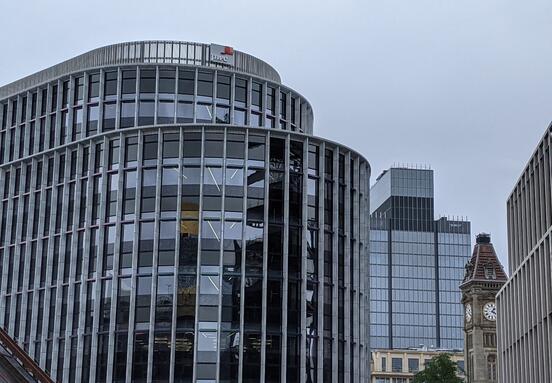Steelcase, the office furniture company, will soon be making such a space. The product, called Brody, can help workers arrive at a total state of concentration—a finding supported by neuroscience research, according to the company.
Last year, Steelcase embarked on its first foray into more private office solutions with Susan Cain Quiet Spaces, a series of designs for shared, closed spaces within open offices that give workers a bit of respite from noise and distraction.
Brody is not an offshoot of Quiet Spaces, however. The design originated as an education solution, inspired by the way that students tend to look for private spaces within a school library when they want to stretch out and concentrate.
"We had kind of an intuitive understanding of how people liked to study. As the project developed, and as we started diving into what it means to focus and why someone would want to escape, these new findings really helped guide the project," says Mark McKenna, director of product design at Steelcase.
As it happened, Steelcase's research-focused Workspace Futures group was already investigating similar ideas around improving focus. Brody is based on research into "Flow"—a state of peak productivity that can last for 45 minutes at most.
"It became an exercise in what humans need to sustain their attention, which led to a study of distraction," says McKenna.
In a document explaining the thinking behind Brody, Steelcase points to research from Dr. Torkel Klingberg of the Cognitive Neuroscience Karolinska Institutet. Klingberg outlines two types of human attention. Controlled attention happens when we focus on a single task or item, ignoring all other distractions. Stimulus-driven attention is what happens to us most of the day—it's when focus is lured away by external stimuli, like loud noises or email notifications.
When designing Brody, Steelcase tried to eliminate as much stimulus-driven attention as possible. "The average office worker gets distracted every 11 minutes, and takes 23 minutes to get back on task. Add those two things up, and most people never get into flow," says McKenna.
To combat this, Brody surrounds workers with a privacy screen that wraps around three sides. The screen is not to protect workers from snooping colleagues, but rather to protect them from distraction, according to McKenna. Other design elements include a an adjustable-tilt work surface (so that workers never need to hunch over), a footrest and armrest, and a personal bag pocket that hides under the work surface.
This isn't exactly Steelcase taking a stand against the open office; Brody is designed to be a shared space for tasks that require especially large amounts of attention. " I think it’s clear that people in an office need a place to focus," says McKenna. "But the bench is here to stay. It’s conducive to collaboration."






